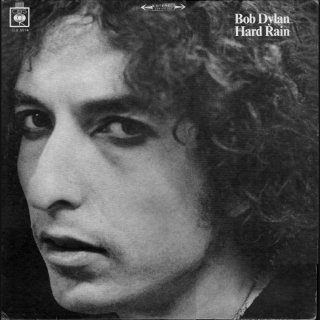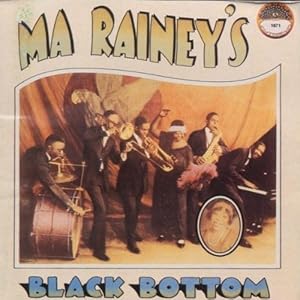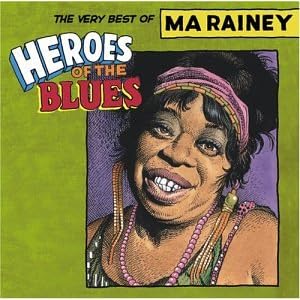Memories of a Wet Day - May 23, 1976

Thirty-six years ago, let’s see
that would have made me 17 years old - a junior at Thomas Jefferson High School
in Denver. I heard on the radio (KFML? KAZY? KBCO?) that something called the
Rolling Thunder Review which featured Bob Dylan would be playing at Hughes
Stadium in Fort Collins. Weird. Why Fort Collins? Why was Dylan playing with
other people? One has to remember that in 1976, there was no internet, no
instant access to information; making a long-distance call was a big, expensive
deal and the next issue of Rolling Stone might be two months away from your
local store. Yes, there was still some mystery and searching left in the world.
It made experiences much fuller when you didn’t know what to expect. Somehow my
best friend Joel Berk and I talked our parents into letting us go. It was a
Sunday, and we had school (not just school, but finals) the next day.
Unbelievably, Joel’s parents gave us the use of their Cadillac (Joel’s dad was
a doctor) to set out on the adventure of our lives. Part of the selling point
to my parents was that the show started at noon, and thus would have to be over
by nightfall - so we would be home at a reasonable hour.
The day arrived and we set off at
about 8:00 a.m. not knowing how long it would take us to get to Fort Collins.
About an hour and a half later we pulled into Fort Collins, which in 1976 was a
pretty sleepy, rural college town. It was Boulder’s hayseed cousin. Kinda dumb,
kinda bucktoothed, but beautiful and alluring just the same. We drove around
aimlessly for a while until we found a sign pointing to Hughes Stadium. Have I
mentioned the weather yet? Completely cloudy! But in that very threatening
high-altitude, not gray but green way. We sort of knew we were in for something.
We got to the stadium at about 10:00 a.m. and were allowed in with very little
security and no lines. Hughes Stadium was pretty small and plain compared to
Mile High Stadium or Folsom Field. It was now sprinkling a light rain as we
headed onto the field, which was already starting to turn muddy. We decided we
would go to the sloping grassy area at the back of the field, looking straight
at the stage. We hunkered down while it steadily rained… harder and harder.
Around 11:00 the sound system burst to life with The Beatles. Some genius took
pity on us and put on the Red Album (1962-1966). I can’t adequately
describe how wonderful this was. Up until this point there were maybe a
thousand or two people in the stadium, wondering what the hell they were doing
there, standing in the rain. Now we had a purpose, a reason to live! God bless
The Beatles. People started streaming in and in the next hour or so the stadium
filled up with 1976-style Colorado hippies. It wasn’t full, but by 12:30 there
must have been at least ten thousand people in the rain.
The stage was obscured by a white
canvas curtain festooned with Dylan paintings (which we didn’t know at the
time, they just seemed like funny, whimsical, childlike drawings). Suddenly,
the Beatles stopped and the curtain rose to a group of bandana wearing
musicians. I honestly don’t remember the exact order that things happened, but
I do clearly remember that for the next 5 or 6 hours there was a (in my memory)
non-stop parade of people on stage. I distinctly remember Kinky Friedman’s set
early in the afternoon being outrageously funny and naughty, and the band
played a weird, loping countrified rock and roll that would lurch with woozy,
ragged harmonies. T-Bone Burnett and Bobby Neuwirth were clearly at the helm,
but Mick Ronson’s wild lead guitar took center stage weaving in and out of
pedal steel by David Mansfield and Rob Stoner’s overwhelming bass playing.
Perhaps the most alluring figure was Scarlet Rivera in a colorful headscarf
sawing out these totally memorable violin lines. The band ran through lots of
songs with someone different taking lead vocal each time. Ramblin’ Jack Elliot
made an appearance and I remember Allen Ginsberg addressing the crowd at some
point, but my memory comes into far clearer focus when Dylan finally strolled
on stage with a white Arab headscarf on.

The rain hadn’t stopped - not for
one second - and the crowd looked like drowned rats. Dylan had an acoustic
guitar on and he played a perfect, solo version of “Mr. Tambourine Man.”
Honestly, I could have gone home right then. It was exactly what I wanted from
Dylan. I had seen him with The Band in ’74 and it was great, but it was oddly
unemotional. I found it hard to connect to the songs. Maybe it was just me, but
this, this was IT: Dylan, alone onstage in the rain, playing one of his
greatest songs to a bunch of drowned rats. He followed with another solo
acoustic performance, “It Ain’t Me Babe,” again letter perfect. Then,
responding to someone in the crowd he said “What rain? Fuck the rain” as the
rest of the band joined him onstage for a song I didn’t know about “one of our
heroes.” The song was “(Where Did) Vincent Van Gogh.” The band was playing that
drunken country punk again, except this time they were backing Dylan on an
outrageous, wailing version of “Maggie’s Farm.” It kept going, building in
intensity as the rain poured and the afternoon wore on. The set reached an
amazing highlight when Dylan delivered a devastating, almost proto-metal
version of his mysterious love song “Isis.” The band leaves the stage, and out
walks Joan Baez, who completely blows everyone’s mind by joining Dylan for a
near-perfect rendition of “Blowin’ in The Wind.” Is this real? Is that Bob and
Joan onstage together after all these years, cheek to cheek singing “Blowin’”
and strumming their acoustic guitars in unison. Yes, and now they are playing
the old folk song “Railroad Boy.” The band is back with them and they are just
ripping through songs I barely recognize. Some of the old stuff was done with
acoustic reverence, but the electric stuff is crackling with energy and totally
rearranged. “Shelter From The Storm” has become a total barnstormer, and “Oh
Sister” hits like a sledgehammer. Dylan departs the stage.
It is probably about 2 or 3 in the
afternoon and the clouds are going nowhere - it is still raining like hell.
There is a short break, and the music starts up again. The band is playing more
songs I don’t know, and for a while they back Joan for a short set that really
got the crowd going. I think she played “The Night They Drove Old Dixie Down”
and, surprisingly, her bittersweet love song to Dylan “Diamonds and Rust.” The
curtain comes down and there is another short break. The curtain rises again
and Dylan is again alone on stage. He plays “I Want You” and it stands in my
memory as one of my favorite songs of the day. More wildly imagined band
arrangements follow; “Tangled Up In Blue,” “You’re A Big Girl Now,” “You’re
Gonna Make Me Lonesome When You Go” is made a high-spirited country duet with
Joan. Somewhere in there, Roger McGuinn takes center stage and provides another
highlight of the day, playing his menacing “Cardiff Rose” and miraculously
making the rain stop for a couple of minutes during his Byrds classic “Chestnut
Mare.” Dylan returns and the light is getting dim. Night approaches and the
audience is soaked and exhausted. The band cranks into what is to be the final
stretch of the show. “Lay Lady Lay” is completely reformed into a screaming
rocker. It was always one of my least favorite Dylan songs, but this
arrangement made it more interesting to me. As the temperature drops, Joel and
I decide to get up close to the stage for the finale of the show. The band
plays a completely ominous obscurity from Planet Waves, “Going Going
Gone” and then lurches into “Idiot Wind” which is delivered with such force and
venom towards his soon to be ex-wife Sara (who it turns out was backstage with
his mother and kids to surprise him for his birthday) that it was downright
scary. Dylan is ferocious - he seems like a man possessed as he screams out the
lyrics. As the show climaxes Dylan leads the band through “Knockin’ On Heaven’s
Door” letting McGuinn take a verse. The band leaves the stage and the curtain
falls once again. It rises on the obvious encore “A Hard-Rain’s-A-Gonna-Fall”
which had the audience singing along in miserable solidarity. And then, it was
over. We were left in the stadium klieg lights with our breath forming clouds
in the air. We looked at each other and realized we had hardly spoken for the
last 5 hours. We had been baptized by rock and roll - in a very real sense.
My throat hurt and the drive back
seemed like it took forever. I was numb for the next few days. I got a C on a
really important final. We really didn’t know what to make of our experience.
In a very real way, this was my Woodstock, or whatever thing it is that acts as
the turning point in your life. I knew after that experience that I could hang
with the big boys in the concert world. If you made it through this show, you
could make it through anything. This concert has never left me. The fact that
Dylan released part of it as the live document of the tour (the album and TV
special Hard Rain) kept it in front of me. I later sought out recordings
of every show I could find of The Rolling Thunder Review, and it has become
something of an obsession. The show still stands as my favorite concert
experience. The adversity of the rain, the innocence of my expectations, and
the gigantic reality of the show itself truly make it the stuff of legend. It
was not a typical Dylan show for the time though. The songs, the arrangements,
the weird, druggy energy made this such an anomaly at that point of Dylan’s
career. I thought it was magic, but I often wonder how someone who wasn’t there
would have heard it.
_______________
I’ve listened to Hard Rain more than any other Bob Dylan
record – by far. In fact, I’ve listened to it more than almost any other
record, period. I’ll even go so far as to say it’s my all-time favorite live
album, above even the Stones’ Get Yer
Ya-Ya’s Out! and the Dead’s Europe
’72. It’s that good, and it rocks my soul every time.
I should
probably qualify my statements. I love Dylan, but I’m not a fanatic, at least
not yet. I have nine of his records in my collection, more than I have by most
other artists. But considering that he’s released 70 or so, and that there are
hundreds, maybe even thousands of bootlegs on top of that, my Dylan cache is
hardly definitive. Most of my nine albums are iconic works from the 60s – The Times They Are a’Changin, The
Freewheelin’ Bob Dylan, Blonde on Blonde, John Wesley Harding. I’m trepidatious about exploring his
later works because there are so many and they’re so wide ranging. Choosing one
feels a little too much like gambling; I’m still such a Dylan neophyte that
when I buy a Dylan record I want it to sound like DYLAN, the paragon of the 60s. So it’s kind of funny that the Dylan
record I most love is one that shatters the Dylan mold, and one that was panned
by critics.

Hard
Rain is a real scorcher of a rock record. It’s not hard rock per se, though
the guitars are loud and grungy and the drums are fast furious at times. It’s
got a raw, lost-in-the-70s rock-and-roll feel to it that demands high-volume
listening. It’s full of emotion and energy, most of which emanates from Dylan’s
voice: he really belts it out. Quieter standards like “Lay Lady Lay,” “One Too
Many Mornings” and “I Threw It All Away” become anguished cries, while more
up-tempo numbers like “Maggie’s Farm” and “Stuck Inside of Mobile with the
Memphis Blues Again” are played at near-punk speeds, with Dylan bellowing every
line at full blast. It’s like he’s pissed off, but not so pissed that he can’t
find the beauty of the melody and the nuance of sentiment in the words.
Likewise, his band seems to be playing with reckless abandon, like garage
buddies who are deep into their second case of beer. But here too everyone’s
hitting all the notes they need to hit in order to not only maintain the songs’
integrity but to squeeze from them a deeper meaning than can be found in their
original versions. And there are moments on the record when the band’s ruckus
and Dylan’s blaring vocals reach such heights that they have no option but to
collapse in on one another, fall to silence, and pick up the song again. Like
in “You’re a Big Girl Now,” when he wails, “I'm going out of my mind, with a
pain that stops and starts, like a corkscrew to my heart!” and pauses for a
long moment before muttering, “Ever since we've been apart.” And “Oh Sister,”
when his voice escalates through, “We grew up together, from the cradle to the
grave,” until he’s practically screaming when he sings, “We died and were
reborn, and then mysteriously saved!” And the band stops, a guitar breaks the
silence, the drums and bass join in, and Dylan begins again with his
heartbreaking poetry: “Oh sister when I come to knock on your door, don't turn
away you'll create sorrow. Time is an ocean but it ends at the shore. You may
not see me tomorrow.”
Hard Rain is full of solar-plexus-socking moments like that, and it begs to be
heard and felt again and again. True, it doesn’t fit the archetype that
critics and connoisseurs have conjured
around Dylan. But damn, it’s kick ass rock and roll.
- Paul Epstein / Joe Miller
 Last Saturday night, local heroes Bad Weather California took to the stage at the Hi-Dive to celebrate the release of their brand new album Sunkissed. The evening opened with comedy courtesy of the Fine Gentlemen's Club, followed by some fine indie-pop from the youngsters in Sauna. Nigh of Joy were up next and played a great set - definitely a band to watch on the Denver scene. But the night belonged to the headliners and BWC did not disappoint. Opening like so many BWC shows with "Let It Shine," the band managed their unique combination of being energetic while also relaxed and jammy. On this tune and several others the band was joined by saxophonist Andy Wild. As good as they are on their own, the addition of Wild's wild sax always brings the music up a notch. The lead single "I'll Reach Out My Hand" had guitarist Adam Baumeister sitting down on pedal steel, always a nice sound. Joe Sampson and Logan Corcoran are an always solid and innovative rhythm section, but the stage truly belongs to frontman Chris Adolph. He is totally in his element leading the crowd in sing-a-longs and driving the band through the twists and turns of his songs.
Last Saturday night, local heroes Bad Weather California took to the stage at the Hi-Dive to celebrate the release of their brand new album Sunkissed. The evening opened with comedy courtesy of the Fine Gentlemen's Club, followed by some fine indie-pop from the youngsters in Sauna. Nigh of Joy were up next and played a great set - definitely a band to watch on the Denver scene. But the night belonged to the headliners and BWC did not disappoint. Opening like so many BWC shows with "Let It Shine," the band managed their unique combination of being energetic while also relaxed and jammy. On this tune and several others the band was joined by saxophonist Andy Wild. As good as they are on their own, the addition of Wild's wild sax always brings the music up a notch. The lead single "I'll Reach Out My Hand" had guitarist Adam Baumeister sitting down on pedal steel, always a nice sound. Joe Sampson and Logan Corcoran are an always solid and innovative rhythm section, but the stage truly belongs to frontman Chris Adolph. He is totally in his element leading the crowd in sing-a-longs and driving the band through the twists and turns of his songs.






























